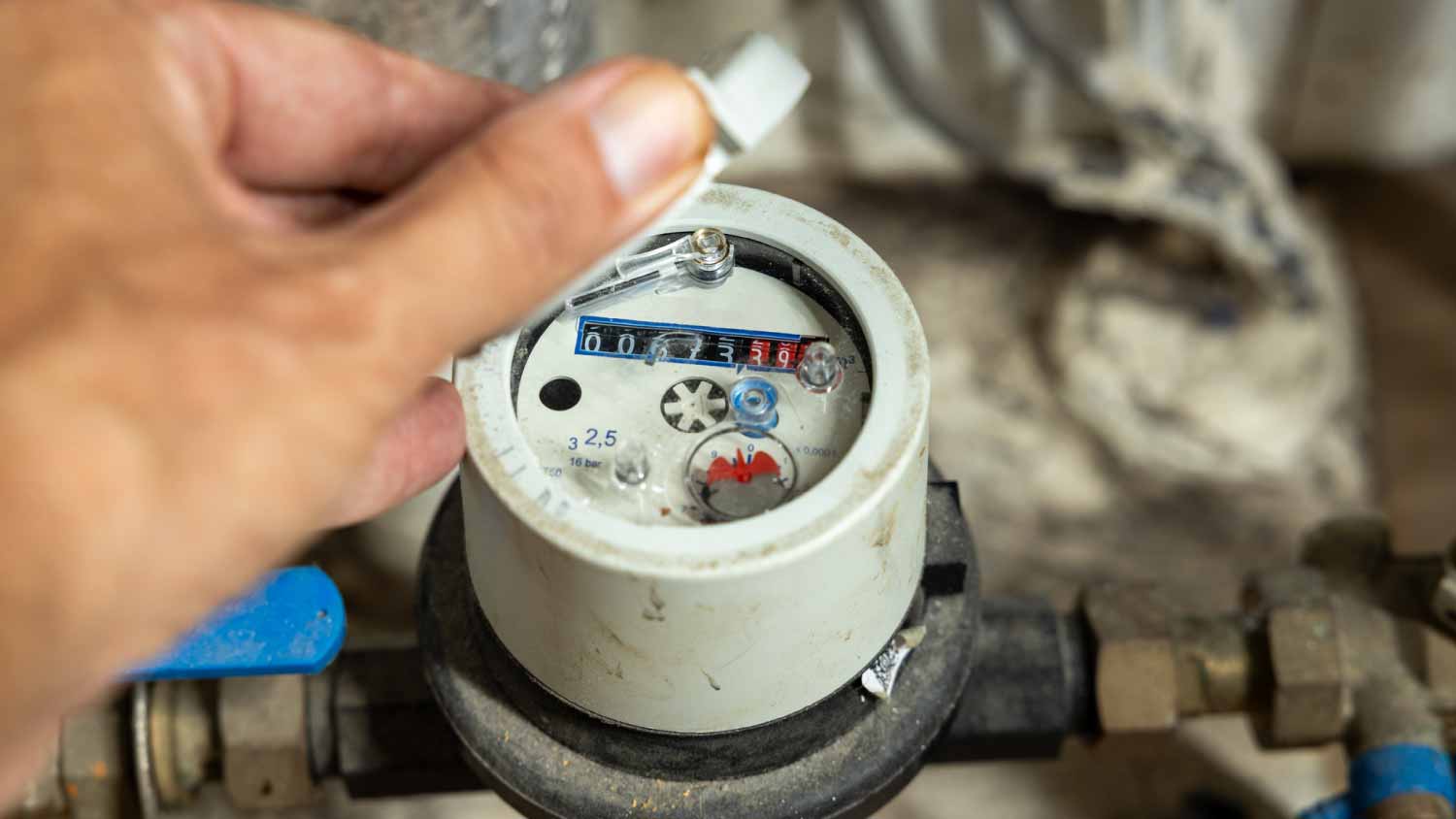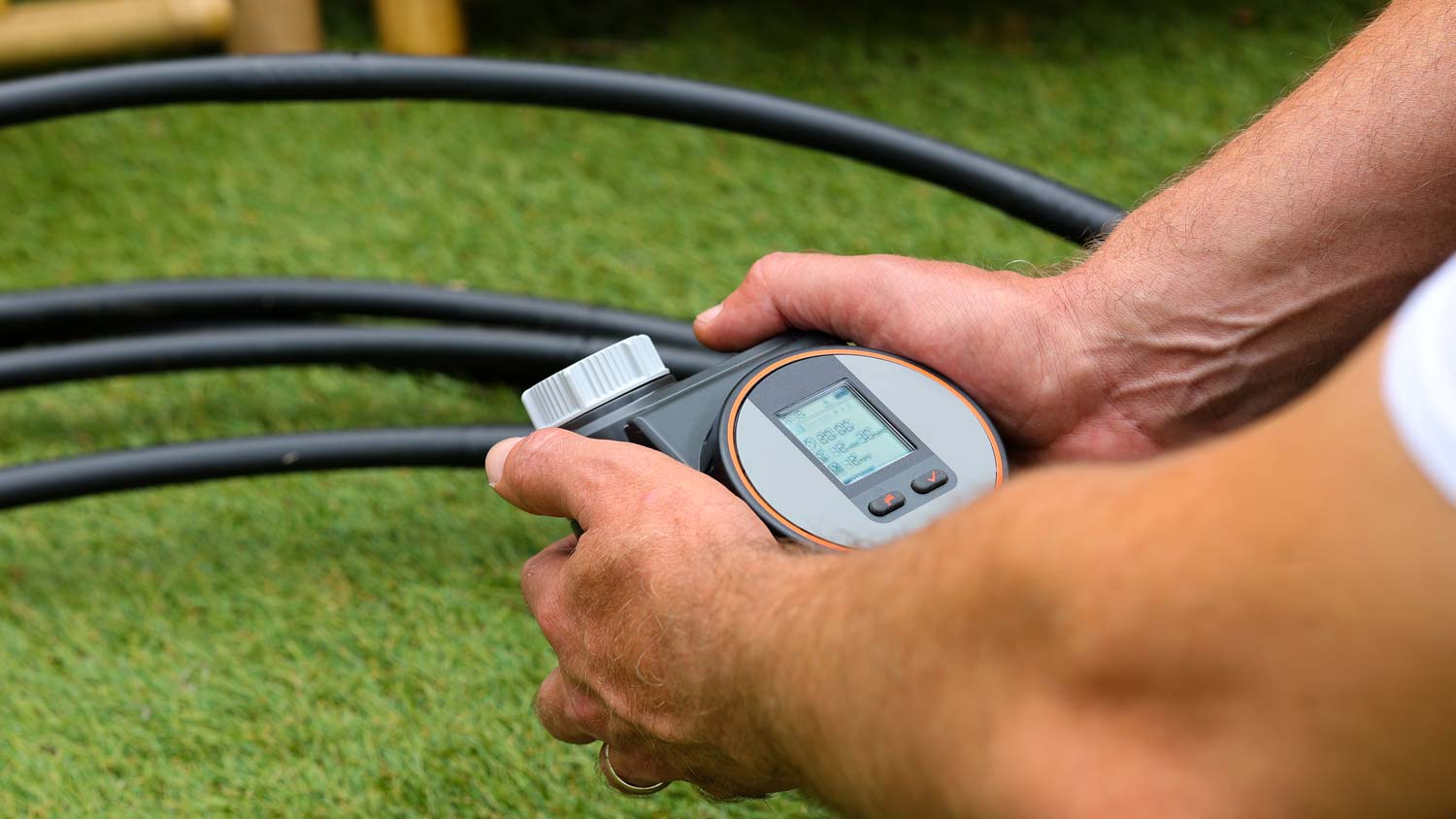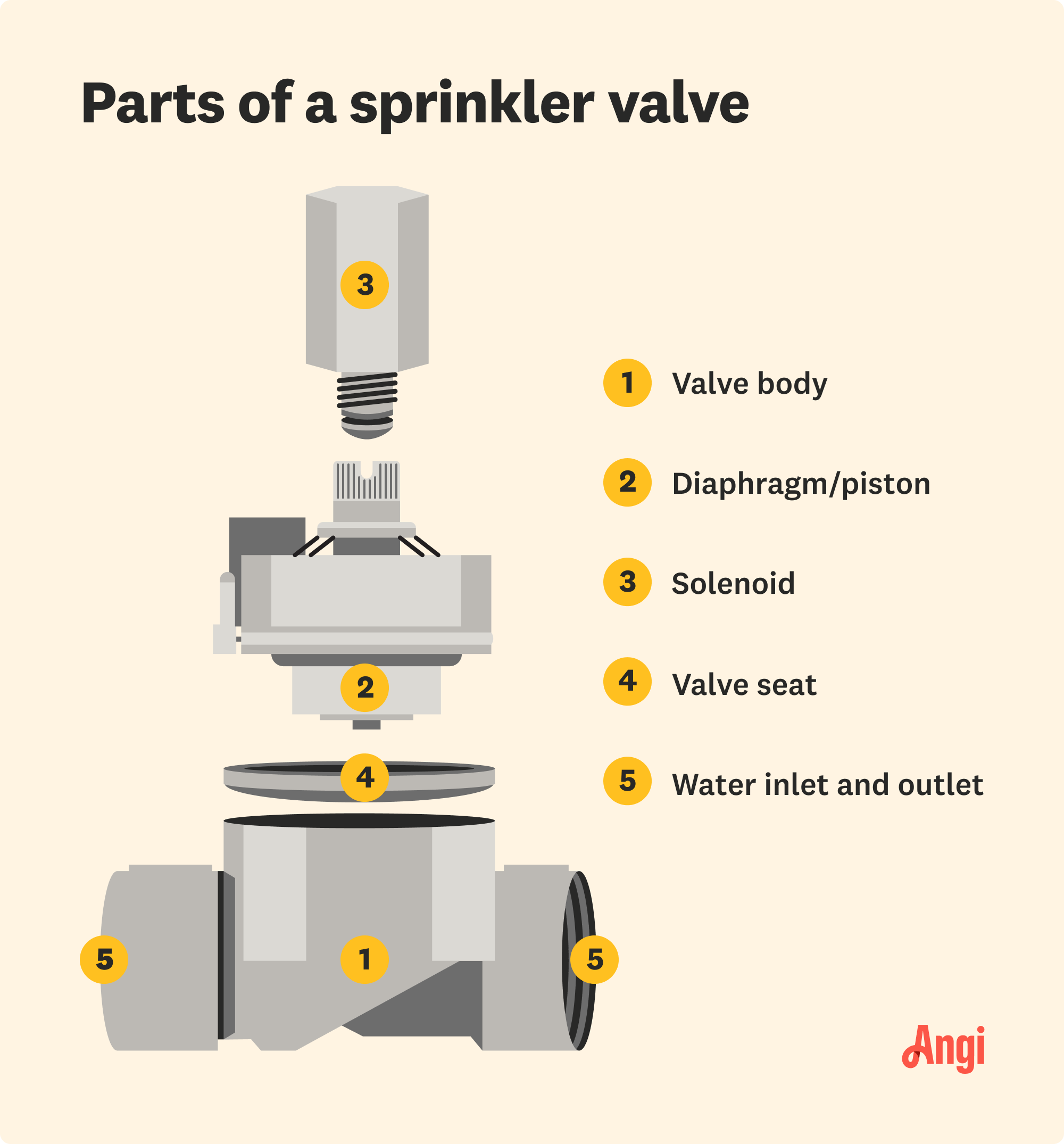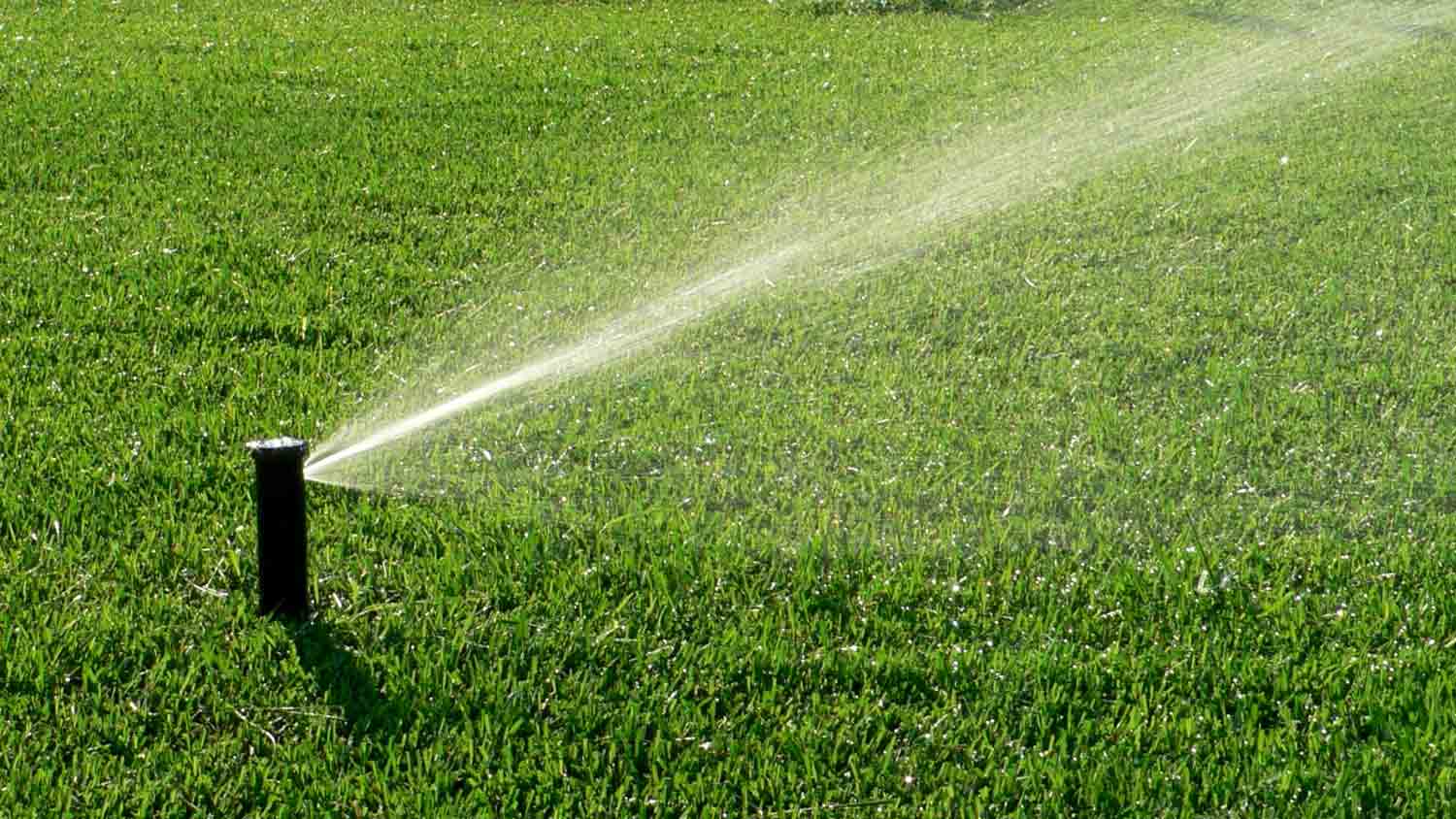
A French drain costs around $9,250 to install, but several factors will determine the final price you pay. Learn the cost to install French drains in this guide.
Let’s demystify how your yard sprinkler works


A sprinkler system is more than just the sprinkler heads.
The system relies on several parts that work together to direct water flow.
Some parts, like the master valve and backflow preventer, are safety features.
A sprinkler system costs about $1,670–$3,550.
When you think of a sprinkler system, you probably imagine the sprinkler heads spraying water gracefully across the lawn and maybe the timer, which you set to water grass at the best time of day. But there are so many more parts to your sprinklers. When it’s time to winterize your sprinkler system, cap a sprinkler head that you no longer need, or repair a leaking irrigation pipe, it’s helpful to know all the different parts of the sprinkler system and how they work together.

Yard sprinklers need to pull water from somewhere. Depending on your property, you may get water from a main line connected to a municipal water source, a well, or a pump.

Your water utility provider usually sets up the irrigation meter, which measures water usage using the sprinkler system. In some places, especially areas prone to drought, like the southwestern U.S., water restrictions determine how much water you can use for residential irrigation.

The entire sprinkler system relies on a controller to determine when the water will spray out onto the yard. You can program the controller or timer to spray water at certain times. This controller then opens or closes the valves when the program time starts or ends.

The valves control the water flow. When they are open, the water can flow through to the sprinklers. When closed, the sprinkler system is off until the next programmed watering time.
| Valve Type | Description |
|---|---|
| Valve box | Underground receptacle for valves |
| Master valve | Protective feature that can override the timer programming |
| Shut-off valve | Turns water supply to the sprinkler system on and off |
| Control valves | Manages water flow for various zones |
| Backflow preventer | Device with two valves that protects drinking water from being contaminated |
Backflow testing is not a DIY job. You could face legal consequences if you try to conduct a backflow test on your sprinklers without certification. Call a sprinkler pro to complete this test quickly, safely, and legally.
The pipes run underground and carry the water from the water supply to the valves and then to all the sprinklers around the yard. For sprinkler systems, you’ll typically have PVC pipes. Sprinkler line depth is about 7 to 10 inches, which protects them from damage.
The risers are small, threaded tubes connecting the PVC pipe to each sprinkler head. These risers can also be capped with threaded PVC pipes if there are sprinkler heads you no longer need.
The sprinkler heads are the part that sprays water around the yard or garden. There are many different types of sprinkler heads, including pop-up sprinkler heads that spray water lower to the ground, rotary nozzle heads that can rotate to spray water around a large area, and impact sprinkler heads, which make a slight ticking sound as they spray and are great for homes with hard water.
Sprinkler caps are optional parts that can plug individual sprinkler heads if you find too many sprinklers per zone in your yard. These caps, which are often included in the sprinkler system kit, screw into the sprinkler head to stop water from coming out of that individual sprinkler head. You can also use threaded PVC caps that screw into risers to stop water flow.
The sprinkler system directs water from the water source through control valves managed by the controller or timer. When the timer is ready, the water flows through the open control valves, pipes, and sprinkler heads. When the controller signals the timer is done, the control valves shut, stopping the water from flowing to the sprinkler heads.
If you have different zones set up, the controller can signal for control valves for one zone to open and allow water to flow while it signals to the control valves for a separate zone to close and stop watering that area.

Installing a sprinkler system costs about $1,670 to $3,550, depending on the type of sprinkler and the size of the area you want to irrigate. You can also set up different zones, about $500 to $1,000 per zone, which allows you to water different sections of your property at different times. This can be convenient for giving all your different plants and grass the right amount of water, but installing additional valves and sprinkler lines costs more.
Whether you need to troubleshoot a malfunctioning sprinkler or you want to install a new sprinkler system, hire a local sprinkler installer near you. Although some repairs, like capping a sprinkler head, can be easy to DIY, finding a leaking pipe or digging trenches to lay new sprinkler lines is a big job. Avoid destroying your lawn and causing water leaks by leaving this work to the pros.
Ruben did a great job painting my house trim. I would use him again.
Robert also provides my lawn care. He pays attention to detail, is a pleasure to work with. I am so happy with the patio he built and the lawn care he provides. Very trust worthy and fabulous!
Very customer friendly. Lawn never looked bettet
This company was knowledgable, fast and attentive to detail. The owner, Cameron, was very helpful with working around my schedule and taking the time to answer my questions. I would definitely recommend them for any pest or lawn issues.
Green goat is a very prompt and professional service. Chris was helpful and knowledgeable in my lawn care needs. I have recommend green goat to all of my friends.
When I called to ask about the services, imagine my surprise when I was told not only could they come out the next morning...but THEY WOULD CALL 30 MINUTES PRIOR TO SHOWING UP AT MY DOOR! Yes, I know that seems like a small thing, but I've been complaining about other service companies (pest...
He appears to listen over the phone and promised to cut in the sod to match the level of the existing lawn. I finally had to mark the sprinklers that needed to be removed because he just ignored my directions. I also asked him to shut down a couple of other sprinklers under a deck and he...
From average costs to expert advice, get all the answers you need to get your job done.

A French drain costs around $9,250 to install, but several factors will determine the final price you pay. Learn the cost to install French drains in this guide.

Find out the average sprinkler system repair cost, what impacts pricing, and how to save. Get transparent estimates to plan your sprinkler repair project.

Discover yard drainage cost estimates, including average prices, key cost factors, and tips to help you budget for your yard drainage project.

Wondering how to repair a sprinkler line? Whether it’s been cut, punctured, or broken, this project is absolutely DIY-able. Learn how with this guide.

Learn how to replace sprinkler heads with this easy guide. Avoid common mistakes, choose the right head, and keep your lawn lush and green.

Wondering how to find irrigation valves on your property? Locating them can be challenging. Learn how to tackle this project with our guide.